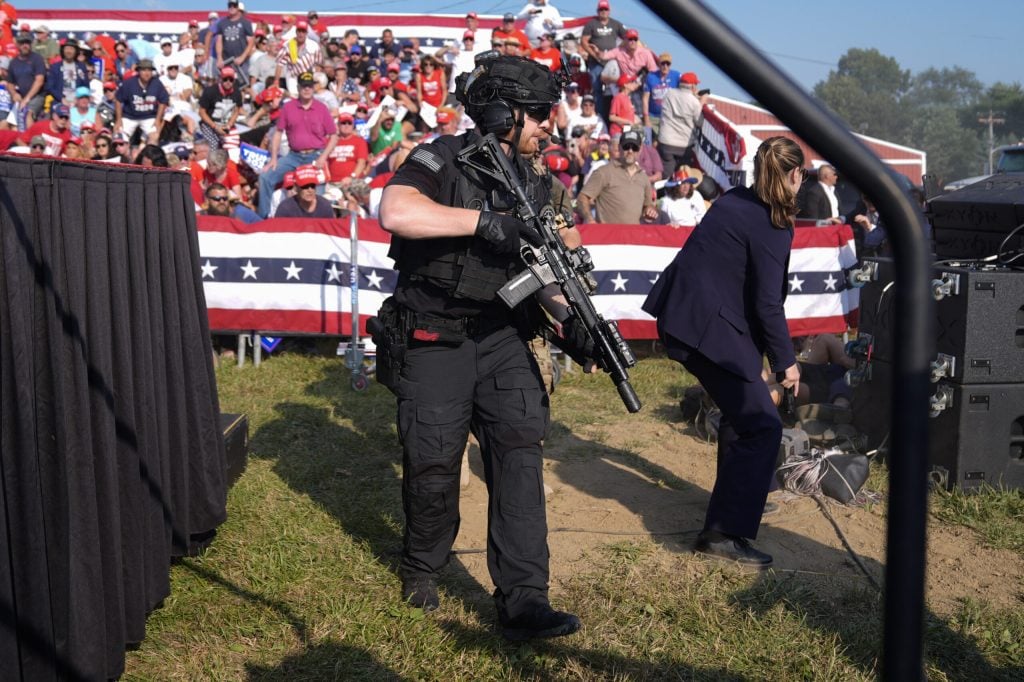Analysis: Trump Shooter Assault Rifle vs US Secret Service Sniper Rifles
This proactive placement and the high-powered optics of the Mk13 allowed for immediate action once the threat was identified, leading to the quick neutralization of the shooter before further harm could be done.

On July 13, 2024, a dramatic incident unfolded at a campaign rally in Butler, Pennsylvania, when a shooter attempted to assassinate former U.S. President Donald Trump.
This event has since ignited extensive analysis of the firearms involved, showcasing a stark contrast in weapon technology and tactical deployment between the assailant and the U.S. Secret Service.

The Shooter’s Weapon: AR-15 Variant
The assailant used a highly modified AR-15 variant, a semi-automatic rifle renowned for its use in several high-profile mass shootings. The AR-15 is a lightweight, air-cooled, gas-operated weapon, favored for its modularity and ease of customization. Originally designed in the 1950s and popularized for both military and civilian use, this rifle fires .223 Remington or 5.56 NATO rounds, which are known for their high velocity and relatively small size.

For this specific incident, the shooter had equipped the AR-15 with a bump stock, significantly enhancing its firing rate. This modification, although facing increased regulatory scrutiny, highlights the ongoing challenges in firearm control and the adaptability of such weapons in unauthorized hands. The AR-15’s effective range, typically around 500 to 600 meters, coupled with its notable accuracy and manageable recoil, makes it a formidable weapon in mass shooting scenarios.
The Secret Service’s Response: Mk13 Sniper Rifle
In contrast, the U.S. Secret Service’s choice of weapon was the Mk13 sniper rifle, a precision firearm used by elite military units like the Navy SEALs. The Mk13 is based on the Remington 700 bolt-action design, known for its reliability and accuracy over long distances. This sniper rifle is chambered for the .300 Winchester Magnum cartridge, providing superior stopping power and range compared to standard military rounds.

The Mk13 used during this event was outfitted with a Nightforce ATACR 7-35×56 scope and a RAPTAR range finder, enhancing its effectiveness in long-range engagements. This setup reflects the Secret Service’s emphasis on precision and the need for a rapid and decisive response to immediate threats. With a maximum effective range of approximately 1,100 meters, the Mk13’s capabilities are significantly beyond those of the typical assault rifles, making it an ideal choice for counter-sniper operations and high-threat scenarios where distance and accuracy are paramount.
Tactical Deployment and Outcomes
The Secret Service’s sniper team was strategically positioned to monitor and neutralize potential threats from a distance. This proactive placement and the high-powered optics of the Mk13 allowed for immediate action once the threat was identified, leading to the quick neutralization of the shooter before further harm could be done.

Broader Implications
This incident underscores the ongoing and complex challenges faced by security agencies in protecting high-profile individuals amid an environment of increasing political polarization and the proliferation of powerful firearms. The contrast in weapon systems between the AR-15 and the Mk13 sniper rifle also highlights broader discussions on gun control, the regulation of firearm modifications, and the tactical considerations in security protocols.
The rapid dissemination of information—and misinformation—about such events through social media further complicates the public perception and security operations, illustrating the intertwined nature of technology, politics, and personal safety in contemporary society.
This attempted assassination not only reminds us of the persistent threats faced by political figures but also reflects the evolving landscape of security and conflict in a deeply divided America. The effectiveness of the Secret Service in this instance demonstrates the critical role of advanced tactical training and preparedness in the face of such challenges.

















Add Comment